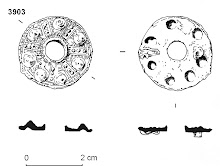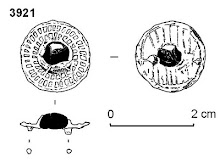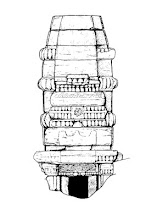 |
| The graffiti, lit by raking light |
Visitors to Gloucester cathedral often notice the graffiti and masons’ marks scratched on its walls, now new research by Urban Archaeology into one elaborate and finely executed drawing, tucked away in the Lady Chapel, suggests it is a portrait of the young King Edward 6.
The drawing is just one of many graffiti in the northern first floor singing gallery of the Tudor Lady Chapel and is found on the gallery’s sloping stone counter at which the choristers would have stood to sing. The graffito is about a foot tall, neatly drawn with a sharp pointed implement, and shows a clean-shaven man in mid-sixteenth century clothes standing legs apart in a confident and striking pose. His bobbed hair is covered in a Tudor bonnet with a large feather, and he wears a striped or slashed jerkin cinched at his waist, a sword or dagger on his belt. To his left a hunting hound wears a studded collar, to his right an antlered deer. In the background is a church on a hill, with soaring spires -so not the Tudor-period cathedral.
The pose and dress is strikingly reminiscent of the 1547 portrait of the young Edward 6 by the workshop of ‘Master John’ currently in the National Portrait Gallery. Could this graffito be a copy of an official portrait of Edward 6 (who died in 1553), and if so, what date might it have been made? The numerous other graffiti appear to largely respect and fit around the design, and although notoriously hard to date there is no reason to suppose the graffito could not be 16th century.
 |
| Portrait of Edward 6 by the workshop of ‘Master John’ currently in the National Portrait Gallery |
Chiz Harward, who carried out the research, commented ‘The subject of the young king out hunting is a common theme in Tudor imagery; if it is indeed a contemporary drawing then it is a powerful demonstration of the power of royal portraiture as a means of creating ‘brand’, as well as the artistry of a cathedral chorister.’
The research, by Chiz Harward of Urban Archaeology, is published in the latest Transactions of the Bristol and Gloucestershire Archaeological Society https://www.bgas.org.uk/.














